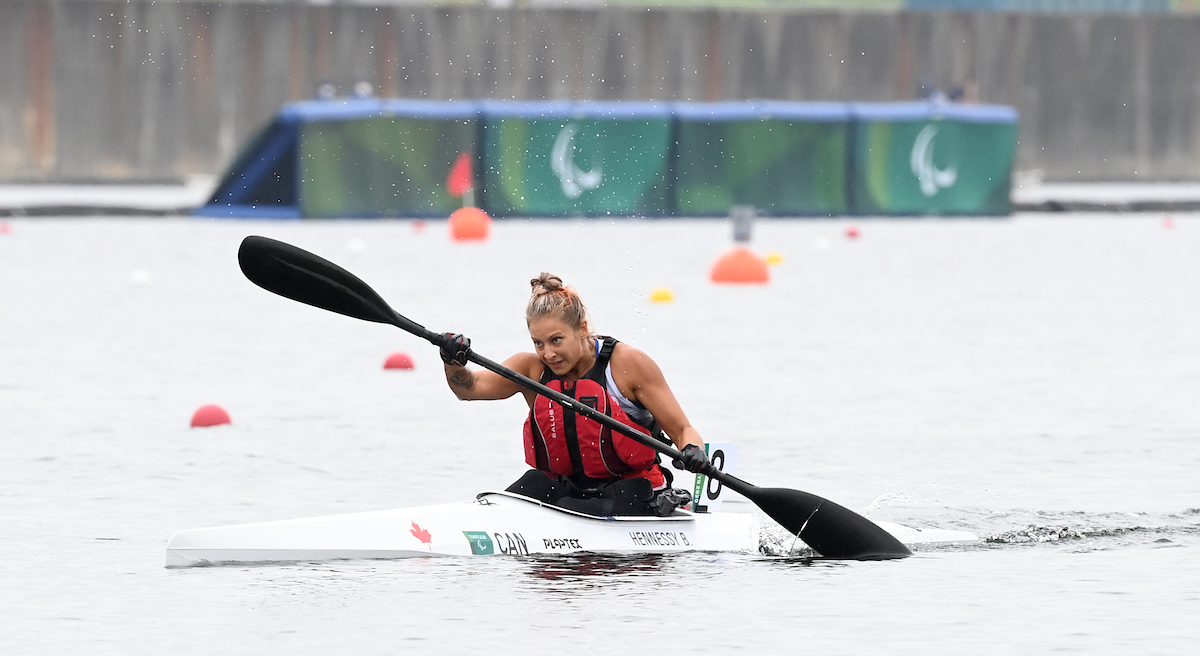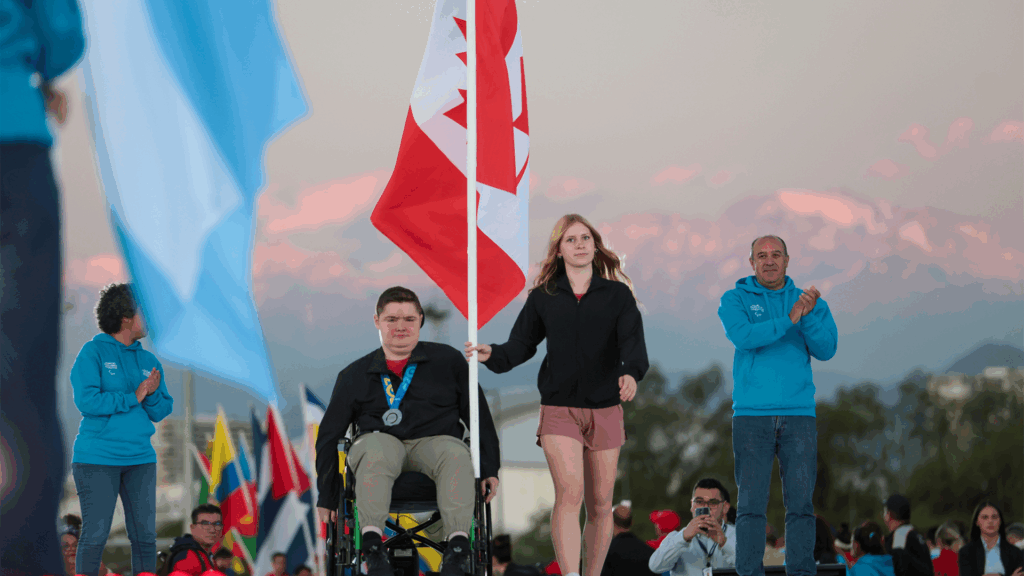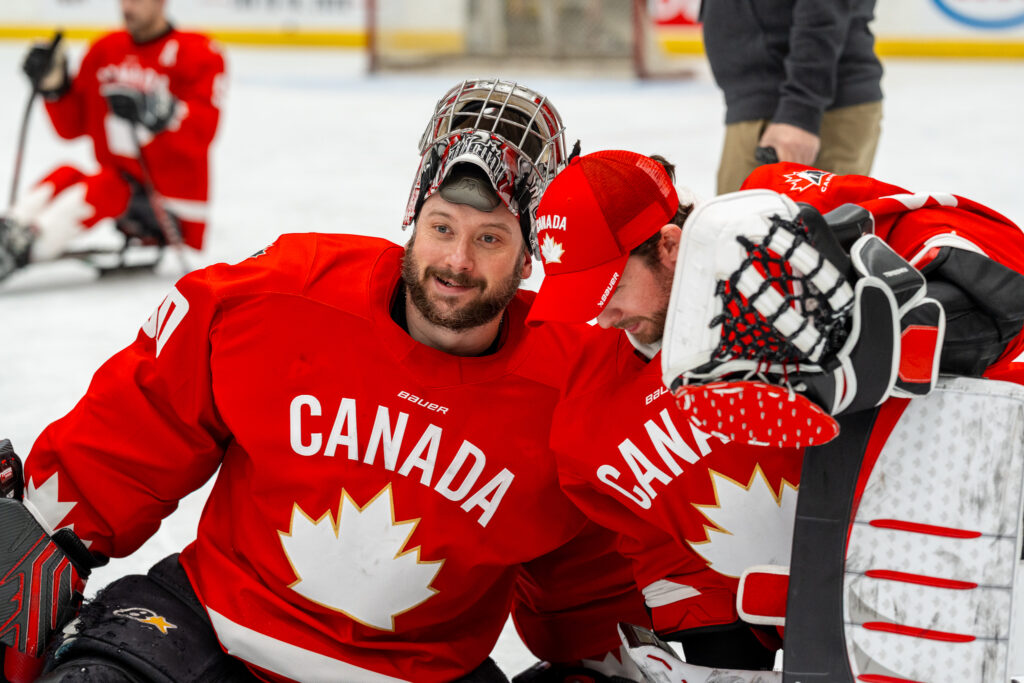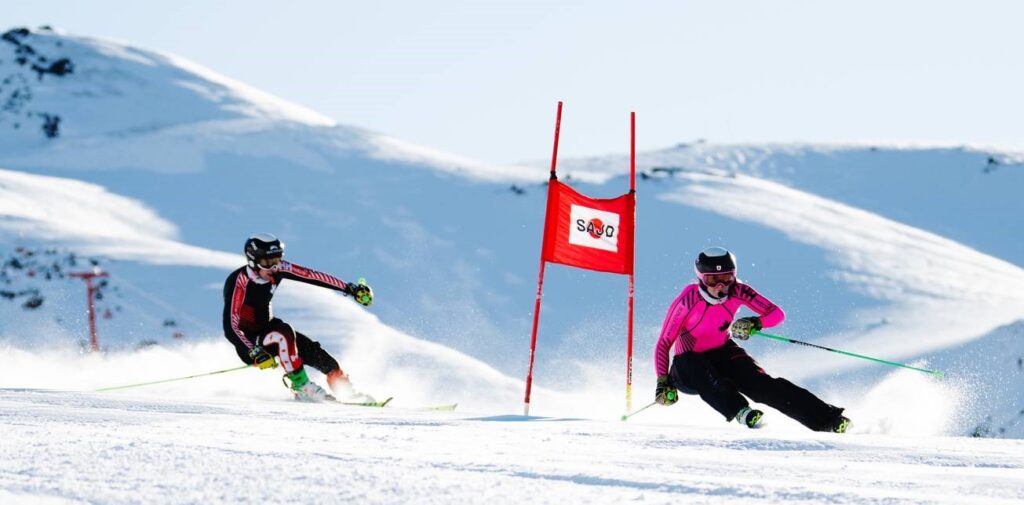Adaptive equipment, accessibility needs part of the package for athletes with a disability
Paralympians share successes and challenges this National AccessAbility Week

Visually impaired triathlete Jessica Tuomela may have spoken for many Paralympians when she compared life as an athlete to life out in society as a person with a disability.
“Sport is the one arena, for the most part, where I always felt that I was an athlete and I was considered on my qualities rather than my disabilities,” she said. “In society still there is a stigma towards physical disability that comes from a place of not understanding.”
Former professional mountain biker and now Team Canada wheelchair basketball player Tara Llanes says people with a disability need to be part of planning access in society.
“I think there is a lack of forward thinking when it comes to basic accessibility in some cities and provinces,” said Llanes, who was injured in 2007. “Whether it’s curb cutouts, accessible parking, and the education around it.
“Things are better in Canada, but I find that most of the time there is no conversation with someone actually in a chair. Sometimes that’s all it takes to understand what works best. When it’s accessible for someone in a chair it will most likely be accessible for just about everyone.”
This need to include people with a disability in planning is reflected in the theme for this year’s National AccessAbility Week – “inclusive from the start”. NAAW takes place May 29 to June 4 and celebrates Canadians with a disability while recognizing the work still needed to be done for a truly accessible, inclusive society.
Tuomela, a four-time Paralympian, might be echoing a point from Llanes on the plight of blind people in society.
“We have a long way to go,” said Tuomela, who races and trains with a guide in her sport. In the swimming and running portions the guide and athlete are tethered. In cycling, they ride a double saddled bike. “Once we label something accessible, it ticks the boxes, but it is not necessarily user friendly. The awareness is becoming apparent, but we need to make it universally accessible.”
Brianna Hennessy, a member of Canada’s national Para canoe team only got involved in her sport a couple years ago. A lifelong athlete before her accident, she developed quickly in the sport and participated at her first Paralympic Games last summer. Just last week, she won two World Cup medals.
She races in two events, the VL2 which is basically a canoe for people with a disability and the KL2 which is the kayak version. Expenses are a constant concern for the athletes and anyone with a disability who wishes to pursue sport.
“My boats are $7,000 to $8,000 each,” she said. “Adding a roof rack is $800. I’ve spent thousands on paddles trying to figure out which suits me best and a fibre seat is $3,000 apiece. Then there are training camps, travel costs and coaching fees.”
Hennessy’s paddling teammate Erica Scarff explains that finding the right equipment can be a lengthy process since each person needs different adaptations based on their disability.
“In my kayak, instead of wearing my whole leg prosthetic in the boat, we made something so that my prosthetic attaches directly to the footboard which is all attached to the boat. That helps because it allows me to use what strength I do have in my leg,” said Scarff, a 2016 Paralympian, whose leg was amputated at age 12 due to cancer.
Many people with a disability also manage lingering health issues. Fellow Para paddler Mathieu St-Pierre says he will likely undergo surgery after this season to fix an issue with his bladder which has affected him since he suffered multiple injuries when a tree fell on him in 2015.
Hennessy, struck by a taxi driver in 2014, says managing her health is top of mind as she is saddled with intense pain.
“Para sport makes up 10 per cent of my life,’’ she said. ‘’But it’s what drives me and gives me my purpose back in my life to get out of bed as I deal with a lot of physical pain form my injury.”
Being high performance athletes, Paralympians have had an opportunity to travel the world and experience life as a person with a disability in other cultures. They agree Canada is certainly a leader in accessibility but more needs to be done.
Hennessy says Paralympians are an important element in changes at the international level.
“From this new perspective as someone with disabilities, it’s definitely allowed me to learn that we have a lot of work to do, to create an all-inclusive world,” she said.
“I feel like as Paralympians, we have a very important job on the world stage, to come together and lift up others along the way.”



"*" indicates required fields
"*" indicates required fields